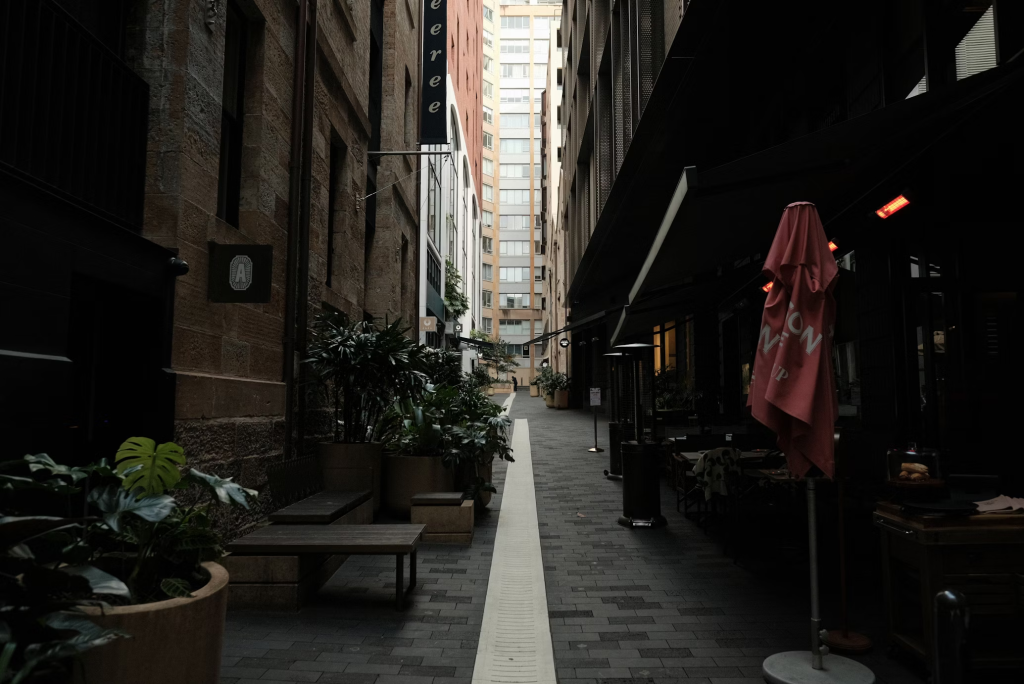Melbourne is often described as Australia’s cultural capital, and one of the most unique aspects that defines the city is its vibrant laneway culture.

Nestled within these narrow passages, Melbourne’s laneways reveal hidden art, quirky cafes, independent boutiques, and historic sites, making them a key part of the city’s identity.
For locals and tourists alike, these laneways provide a glimpse into the city’s creative heart, a space where art, cuisine, and history intermingle in a way that feels distinctly Melbourne.
In this article, we’ll explore the essence of Melbourne’s laneway culture, why it’s so beloved, and how it contributes to the city’s reputation on the global stage.
What Is The Laneway Culture In Melbourne?
Laneways have a special place in Melbourne’s urban fabric, characterized by their hidden charm, artistic spirit, and vibrant social scenes.
Originally used for deliveries and as service areas behind commercial buildings, these narrow streets have since evolved into cultural hubs.
The transformation of Melbourne’s laneways began in the 1980s when artists, musicians, and entrepreneurs started repurposing these spaces, filling them with street art, cafes, and boutiques that set the city apart.
Today, Melbourne’s laneways are known for their eclectic mix of art and commerce, often hidden in plain sight.
This sense of discovery is a core part of the laneway experience – a passerby might stumble upon a mural by a famous street artist, a pop-up food stall, or a cozy coffee shop tucked between historic brick walls.
Hosier Lane, for example, is famous for its ever-changing street art, drawing artists from around the world to showcase their work.
Other laneways, like Degraves Street, are bustling with coffee shops, bakeries, and boutiques that capture the essence of Melbourne’s renowned café culture.
In essence, Melbourne’s laneway culture is about embracing creativity, fostering community, and celebrating the unexpected.
For many, exploring these hidden passages offers a break from the commercialized and structured parts of the city, providing a space where creativity and authenticity shine.
Famous Laneways To Explore In Melbourne
If you’re visiting Melbourne, there are several iconic laneways that you simply can’t miss. Each one offers a unique experience, from world-class street art to bustling cafes and unique shops.
Here are some of the most famous laneways that showcase the best laneways in melbourne culture:
Hosier Lane
- Hosier Lane is Melbourne’s most iconic laneway for street art. Located near Federation Square, this graffiti-covered alley is a popular spot for tourists and locals, with new art pieces popping up regularly. Renowned for its bold murals, stencils, and graffiti, Hosier Lane is an ever-changing canvas that attracts artists and photographers alike. Unlike traditional art galleries, the art in Hosier Lane is free and accessible to everyone, reinforcing Melbourne’s commitment to public art and its embrace of non-traditional forms of creative expression.
Degraves Street
- For those looking to experience Melbourne’s café culture firsthand, Degraves Street is a must-visit. Lined with cafes, eateries, and boutique stores, this laneway buzzes with energy, especially during peak coffee hours. Visitors can enjoy everything from artisan pastries to high-quality espresso as they soak in the unique, European-inspired atmosphere. Degraves Street captures the communal spirit of Melbourne’s laneways, as locals and visitors gather to sip coffee, enjoy people-watching, and savour the vibrant environment.
ACDC Lane and Duckboard Place
- Named after the legendary rock band AC/DC, ACDC Lane and its neighbouring Duckboard Place are laneways that showcase Melbourne’s love for music and alternative culture. ACDC Lane is home to several music-themed murals and has become a hub for the city’s music lovers. Here, you’ll find rock-inspired artwork and live music venues where local artists perform regularly. The area is also home to some popular bars and eateries, offering an ideal spot for a night out in Melbourne.
These are just a few examples, but Melbourne has over 200 laneways to explore, each offering a unique piece of the city’s character.
Whether it’s art, music, food, or shopping, the laneways provide something for everyone, making them a must-visit for anyone wanting to experience Melbourne’s true spirit.
How Laneways Shape Melbourne’s Cultural Identity
The laneway culture in Melbourne does more than provide a backdrop for tourism; it’s an integral part of the city’s cultural identity.
The laneways have become an open stage where artists, entrepreneurs, and creators can express themselves freely.
This culture of expression and innovation has helped position Melbourne as a global city of arts and culture, attracting both creative talent and tourists who seek a unique urban experience.
One of the most significant ways laneways shape Melbourne’s identity is through street art. Street art in Melbourne is not only tolerated but celebrated, with city policies supporting artists who contribute to the laneway scenes.
The art seen in places like Hosier Lane is dynamic and fluid, constantly evolving with new layers of paint, ideas, and social commentary.
This openness has led Melbourne to become an internationally recognized city for street art, with artists from around the world coming to leave their mark.
The café culture within these laneways also adds to Melbourne’s reputation as a foodie destination. Small cafes and eateries that line the laneways offer diverse culinary experiences, from Italian and French patisseries to specialty coffee and fusion foods.
These establishments often favour quality and creativity over-commercialisation, fostering an intimate dining experience that feels like a discovery each time.
Moreover, Melbourne’s laneway culture reflects a blend of historical preservation and modern creativity.
Many of the buildings within these laneways have been around since the city’s early days, giving them a nostalgic charm.
Repurposing these older spaces into modern cafes, bars, and art spaces reflects Melbourne’s ability to retain its historical roots while adapting to contemporary trends.
This blend of old and new allows residents and visitors to experience both Melbourne’s past and present, creating a sense of continuity and belonging within the urban landscape.
Conclusion
Melbourne’s laneway culture is more than just a collection of hidden streets; it’s a living, breathing expression of the city’s soul.
In a world where urban spaces are often defined by skyscrapers and chain stores, Melbourne’s laneways stand as a refreshing reminder of the power of creativity, community, and individuality.
Each laneway tells its own story, reflecting the diversity of Melbourne’s people and the city’s openness to new ideas.
The charm of Melbourne’s laneways lies not only in what they offer but also in the sense of discovery they inspire.
Exploring these laneways is like peeling back the layers of the city to reveal an underground world brimming with art, music, food, and history.
They create a shared space where locals and visitors alike can pause, engage, and become part of the city’s ongoing narrative.
As Melbourne evolves, its laneway culture continues to grow and adapt, embracing new artists, innovative eateries, and cultural experiences while honouring the city’s storied past.
This dynamic environment makes Melbourne’s laneways a must-see destination that leaves a lasting impression.
For anyone visiting the city, the laneways are more than just a tourist attraction—they’re a chance to feel the beating heart of Melbourne, experience its vibrant creativity, and connect with a culture that celebrates uniqueness, innovation, and community.
In every twist, turn, and mural, Melbourne’s laneways invite us to explore a city that thrives on artistic freedom and the joy of discovery.
